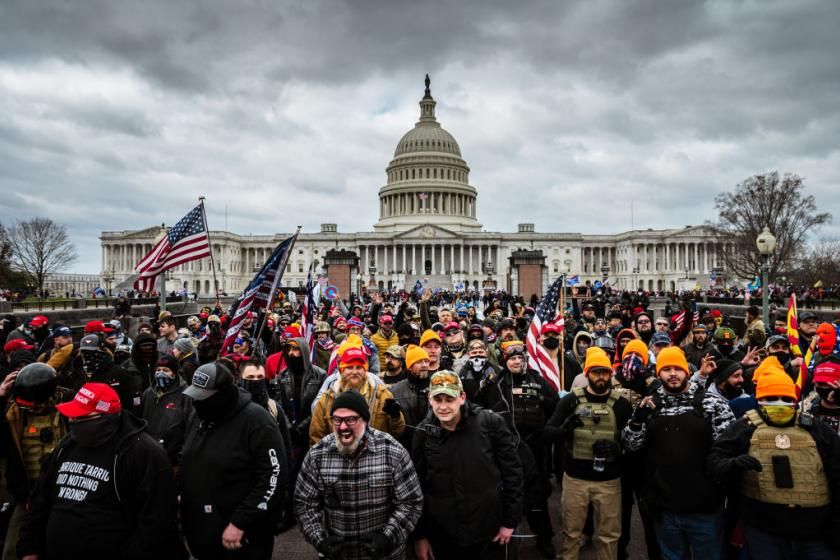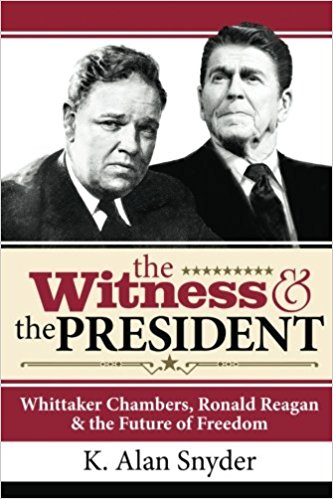January 6, 2021, at the United States Capitol, was not a protest by American constitutional conservatives. American constitutional conservatives do not storm the Capitol building in an attempt to stop the counting of electoral votes in an election that was certified by all fifty states, both Republican and Democrat, to be a reliable vote count. American constitutional conservatism does not reject the decisions of courts, both state and local, that ruled on the multitude of cases that sought to overturn those vote counts. Keep in mind that many of those judges were appointed by Donald Trump himself. Keep in mind that all six conservative justices on the United States Supreme Court rejected the cases that were brought to them. American constitutional conservatism does not rush into conspiracies to try to explain all that away.
Yet here we are today with the brand called “American constitutional conservatism” connected in the public mind with a vast array of conspiracy theories, chief among them the QAnon variant that “inspired” many of the leaders of this pre-planned riot. And riot is the proper word to use for what occurred. Many showed up with the intent either to take hostages or even to kill legislators.
American constitutional conservatives do not hit Capitol policemen with fire extinguishers. That policeman later died from his injuries. Others are now hospitalized with other serious injuries. American constitutional conservatives do not smear feces on the walls of the Capitol, nor do they inscribe on a door, “Murder the Media.” American constitutional conservatives don’t break the windows, ransack offices, and carry off “trophies” from their rampage. American constitutional conservatives don’t start screaming, “Hang Mike Pence” because he “betrayed” Donald Trump by not overturning the vote count. He had no authority constitutionally to do so.
This is not the American constitutional conservatism I’ve been a part of for my entire adult life. This is a phony replica. The worst part is seeing so many in the crowd claiming this is being carried out as a Christian duty, thereby besmirching the faith. “Jesus Saves” signs appeared in the midst of Trump banners. Christian music played while some people erected a gallows on the grounds. This is not real Christianity; it’s an abomination.
A little history.
Modern American conservatism has never been a monolithic group; there always has been variety in the approach. I teach a course on modern conservatism and use this book by George Nash. He clearly details the varieties of conservatives, but also highlights what they always agreed upon: limited government with substantial freedom, both economically and socially; a moral standard for society based on a Judeo-Christian worldview; and rejection of totalitarianism in whatever form—communism, fascism, etc.
Some groups tested that consensus by pushing extreme views. The John Birch Society, for instance, saw communists everywhere, and even accused President Eisenhower of complicity in that system. Mainstream conservatives tried to live with that group as part of the coalition, but eventually excised it from respectable conservatism. The reasons were sound.
Another group, centered around author/polemicist Ayn Rand, pushed a libertarian model that basically rejected the Judeo-Christian framework. Again, there was an attempt to include them, but when Whittaker Chambers took Rand to task for her materialistic/atheistic worldview and pointed to her underlying authoritarianism (in the name of freedom, mind you), the mainstream conservatives rejected Randianism. The reasons were sound once more.
The very first day that Donald Trump descended his escalator to announce his candidacy for president, I knew I could never support him. His entire life was an affront to all my Christian values. As the primary season progressed, his constant vilification of others, especially other candidates, his false allegations of voter fraud (such as in the Iowa caucus), and his general lack of knowledge of government and policy only became more pronounced.
His presidency didn’t change him; it only emboldened him. Yet conservatives rushed to embrace him even though his outlook on presidential powers veered toward the authoritarianism they supposedly abhorred. And the Republican party leaders overall became nothing more than his sycophants, excusing every breach of constitutionalism and the very concept of limited government. Oh, he would use the right words occasionally, but they were simply words given to him by others. His understanding of anything truly conservative was scant, and only trotted out when it served his purposes.
Meanwhile, he used his Twitter account to build an army of aggrieved and angry fans who learned to adore him. QAnon promised that Trump would send all the bad people to prison or execute them. He would lead us into the new promised land. I watched this and literally wept.
American constitutional conservatism and the Republican party have never been exactly the same. Only in Ronald Reagan did the two come together more than at any other time. But in the Trump Era, Republicans deserted whatever they had once adopted from that constitutional conservatism. Finally, last year, I made a decision I hoped I would never have to make. I could no longer identify with a party that had lost its philosophical moorings. I changed my voter registration from Republican to No Party Affiliation.
That doesn’t mean I became a Democrat. I strongly disagree with that party on most issues, especially on the right to life and religious liberty. The party’s policy on the former is unlimited abortion; on the latter, there is always pressure to force religious organizations to go along with abortion, same-sex marriage, and other infringements on individual conscience. I didn’t vote for Joe Biden. I did a write-in for president because no party offered a real option.
The question now is whether the Republican party, and conservatism in general, can come to its senses. Trumpism is not consistent with American constitutional conservatism. Trumpism must be excised in the same way as the John Birch Society and Randianism was if I am to be able to resume my lifelong connection to the Republicans. As I said in a previous blog post, I’m not optimistic, at least in the short-term. Yet I want to have hope.
When I published my book on Ronald Reagan and Whittaker Chambers in 2015, I never dreamed what was going to happen next in our politics. My goal in publishing this book was to highlight two conservatives who did so much to advance the proper understanding of a principled conservatism.
Chambers went through a conversion from communist ideology to a Christian worldview. Reagan switched from a New Deal Democrat to the leader of a movement that combined a strong philosophical foundation with a way of putting it into practice. I still hold them up as examples we need to follow.
Reagan once said when he was asked why he left the Democrats for the Republicans that he didn’t really leave the Democratic party—it left him. Now I know the same from my own personal experience.
American constitutional conservatism needs to make a comeback. I will do what I can, what little that may be, to help achieve that goal.





